After a year of robbing banks, John Dillinger died on July 22, 1934, when federal agents shot and killed him as he left a movie in Chicago, Illinois.
On July 22, 1934, federal agents surrounded Chicago’s Biograph Theater and waited for their target. Inside the theater was a man dubbed Public Enemy No.1, a notorious bank robber whose gang had been rampaging around the Midwest for almost a year. John Dillinger’s death, the agents hoped, would finally end the gang’s reign of terror.
Over the course of 10 months, Dillinger and his gang had killed 10 men, wounded seven others, staged three jailbreaks, and made off with over $500,000 (about $7 million in today’s currency).
Now, in Chicago, the federal agents finally had the infamous gangster within reach.
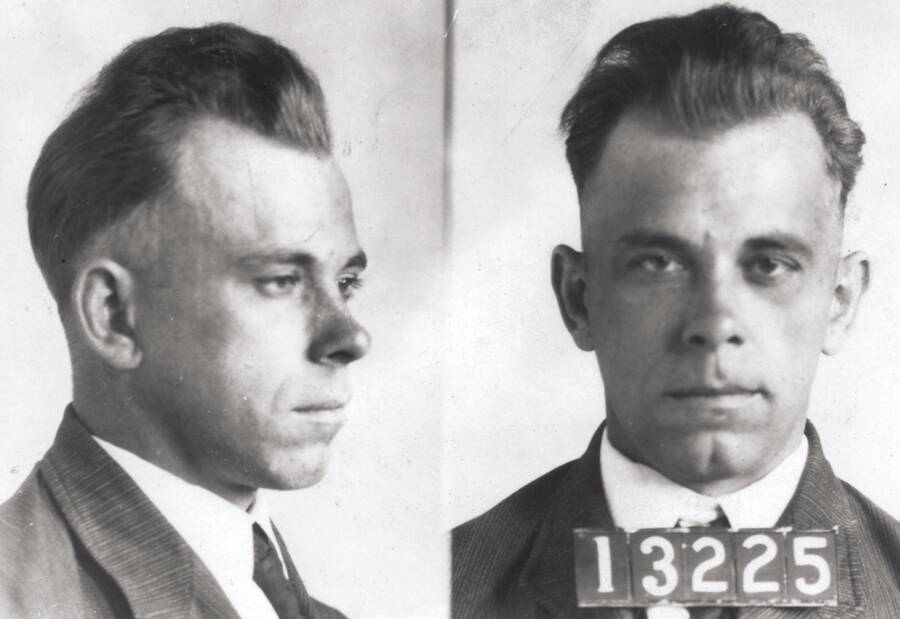
FBIJohn Dillinger’s death in 1934 put an end to one of the most infamous crime sprees in American history.
Their moment came around 10:30 p.m., when Dillinger emerged from the Biograph with two female companions on either side. They passed by a window where federal agent Melvin Purvis stood waiting and Purvis lit his cigar, signaling to the other agents that it was time to move in.
Dillinger tried to get away, but didn’t make it. He was shot three times and fell face down on the pavement. Twenty minutes later, a doctor at the Alexian Brothers Hospital pronounced John Dillinger dead.
John Dillinger’s Early Life And Petty Crimes
John Herbert Dillinger was born on June 22, 1903 in Indianapolis, Indiana. He grew up in the Oak Hill neighborhood, a middle class town where his father worked as a grocer. As PBS notes, Dillinger’s father was alternatively severe and indulgent with his son, sometimes beating him or locking him in the house, and sometimes giving him candy and permission to roam freely.
Dillinger’s mother died when he was just three years old, and he never cared much for his stepmother, who his father married when Dillinger was around the age of nine. Indeed, Dillinger seemed to spend as much time away from home as possible. He spent his childhood leading a neighborhood gang called the “Dirty Dozen” and stealing coal from railroad freight cars.
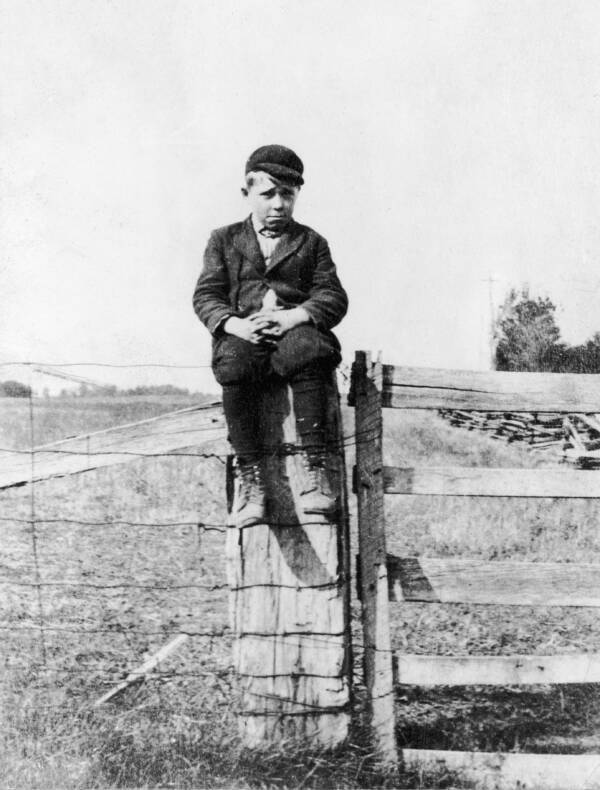
Hulton Archive/Getty ImagesJohn Dillinger as a young boy in Indiana.
According to the Federal Bureau of Investigation, Dillinger eventually dropped out of school and started working at a machine shop in Indianapolis.
His father, fearing that working in the city was corrupting his teenage son, eventually moved the family to a more rural setting — a farm near Mooresville, Indiana. The move did little to correct his son’s behavior, though. Dillinger used his motorcycle to commute to work, and he spent late nights in Indianapolis drinking, fighting, and visiting sex workers.
After getting into trouble for auto theft, Dillinger decided to join the Navy. But his rule-breaking behavior continued, and Dillinger deserted his post after just five months. Back in Mooresville, the 21-year-old Dillinger married a 16-year-old named Beryl Ethel Hovious.
The simple life didn’t suit Dillinger, however, and he struggled to find work. That’s when he got in contact with his friend, an ex-convict named Ed Singleton, and the two made a plan to rob a local grocer together. Dillinger beat the man, but he and Singleton were quickly apprehended.
Singleton pleaded not guilty, but Dillinger, on his father’s advice, confessed. Shockingly, Singleton went to trial and received a sentence of two years in prison; Dillinger received joint sentences of two to 14 years and 10 to 20 years. His father attempted to plead for a less harsh sentence, to no avail.
John Dillinger began serving his time in 1924. He would emerge eight-and-a-half years later as a hardened criminal with plenty of lawbreaking friends.
The Infamous Crime Spree Of Public Enemy No.1
On May 10, 1933, John Dillinger was released from prison. A little more than a month later, he robbed his first bank, the New Carlisle National Bank in Ohio, and stole $10,000 from the bank’s vault. Dillinger and several of his accomplices went on to rob four banks, two grocery stores, and a drug store, absconding with more than $40,000 in just four months.
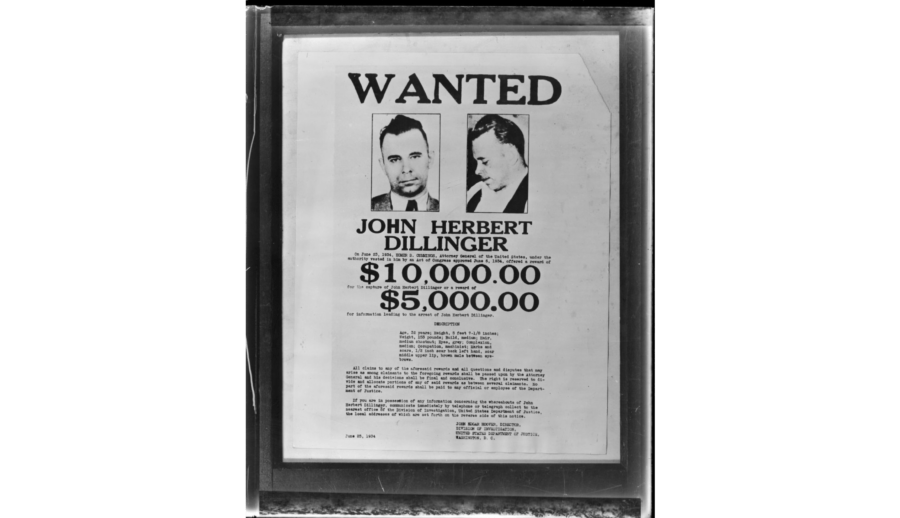
Boston Public LibraryA wanted poster calling for John Dillinger’s arrest.
Though Dillinger was arrested in Dayton, Ohio, that September, several members of the “Dillinger Gang” were able to break him out of prison in October. Masquerading as Indiana State Police officers, they claimed they had been given orders to extradite Dillinger to Indiana. The sheriff called their bluff and demanded to see their badges — but then one of the Dillinger gang shot him and beat him unconscious.
Over the course of several months, the Dillinger Gang would rob more than a dozen banks in addition to looting police arsenals in both Auburn and Peru, Indiana, according to the FBI. They equipped themselves with machine guns, rifles, revolvers, a stockpile of ammunition, and bulletproof vests and put these items to use as they tore through the Midwest.

Public DomainJohn Dillinger put himself on the FBI’s radar when he drove a stolen car across state lines.
Despite their robberies, neither Dillinger nor his gang had actually committed any federal offenses. But on March 3, 1934, Dillinger stole the sheriff’s car while escaping from jail in Crown Point, Indiana, and drove back to Chicago. According to PBS, J. Edgar Hoover — then leading the Department of Investigations, the precursor to the FBI — was thrilled. Dillinger had broken the National Motor Vehicle Theft Act by driving across state lines.
With that, the federal government had a reason to go after “Public Enemy No.1”. They quickly launched a plan that would lead to John Dillinger’s death.
The Final Tip That Led To John Dillinger’s Death
Following a near miss in Wisconsin, federal agents received a tip that changed everything. According to the FBI, the Romanian-born madam of a brothel named Anna Sage (real name: Ana Cumpanas) contacted agents on July 21, 1934, claiming to have information about John Dillinger. She told them that she was planning to attend a movie with Dillinger the next day, alongside another woman named Polly Hamilton.
In hopes of preventing her deportation from the United States, Sage promised to tell the agents which theater she and the others attended, and notified them that she would be wearing an orange dress.
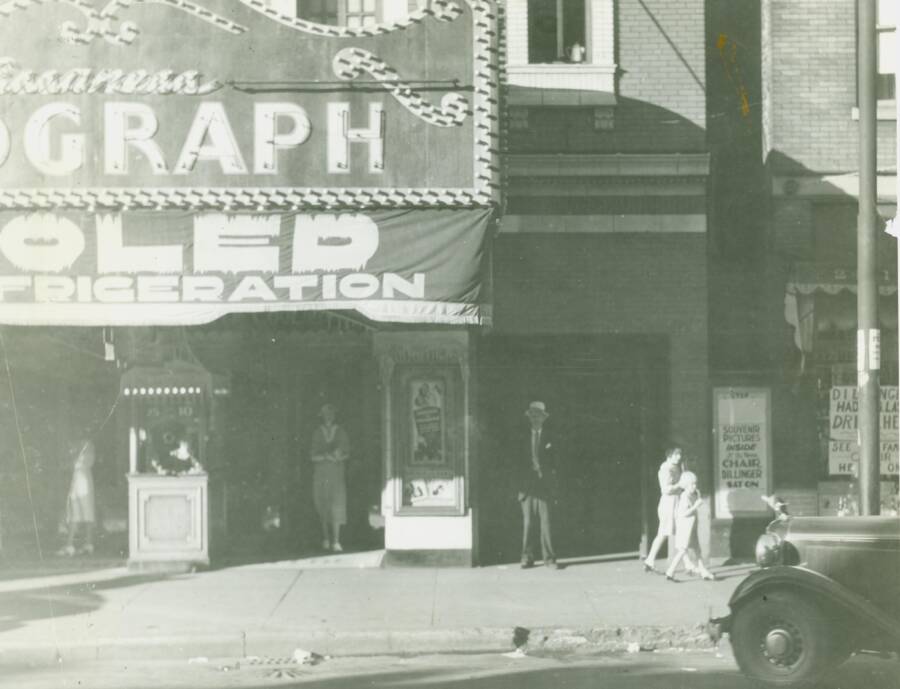
FBIThe Biograph Theater, where the FBI shot and killed John Dillinger on July 22, 1934.
By the next day, July 22, 1934, Sage still didn’t know which theater Dillinger would be at, so federal agents lay in wait at the Biograph Theater and the Marbro Theater, both in Chicago. At 8:30 p.m., agents observed Dillinger, Hamilton, and Sage — her orange dress taking on a red hue in the evening lights — entering the Biograph to see Manhattan Melodrama. They decided to wait outside instead of risking a shoot-out in the theater.
Two hours later, Dillinger and the two women emerged. Sixteen federal agents and Chicago police officers were waiting, and agent Melvin Purvis lit his cigar to give the others a signal. Just as Dillinger’s two female companions fell behind him, Dillinger — sensing something amiss — turned and appeared to reach for a .380 automatic pistol he had in his pocket.
Three of the agents quickly opened fire and struck Dillinger. Two of their bullets missed, but three found their mark. Fatally wounded, Dillinger collapsed onto the ground. In the 2009 film Public Enemies, Dillinger muttered “bye, bye, blackbird,” as he died. Though the FBI claimed that the gangster said nothing, it’s been rumored that John Dillinger’s last words were actually, “You got me.”
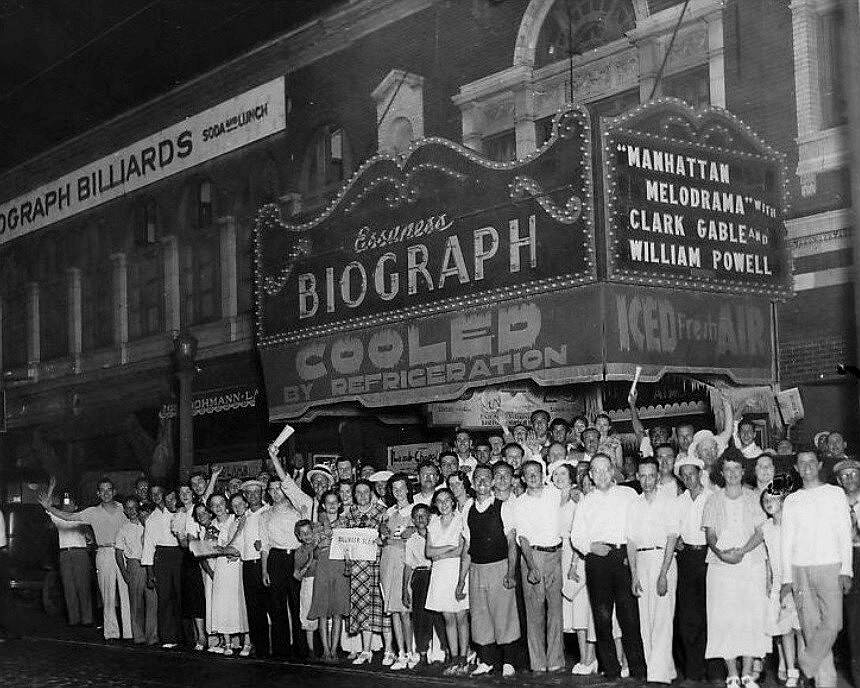
Public DomainA crowd of people stood outside the Biograph Theater after John Dillinger’s death.
John Dillinger died at the scene, and was pronounced dead twenty minutes later. “I’m glad it’s all over,” Purvis remarked, according to the Chicago Times.
The Aftermath Of John Dillinger’s Death
By the time John Dillinger died in July 1934, he’d become both beloved and reviled in the United States. Some saw him as a good-for-nothing criminal, but others considered him something of a Depression-era folk hero.
“Why should the law have wanted John Dillinger?” one man wrote to a newspaper in Indianapolis, according to The New York Times. “He wasn’t any worse than the bankers and politicians who took poor people’s money. Dillinger did not rob poor people. He robbed those who became rich by robbing the poor. I am for Johnnie…”
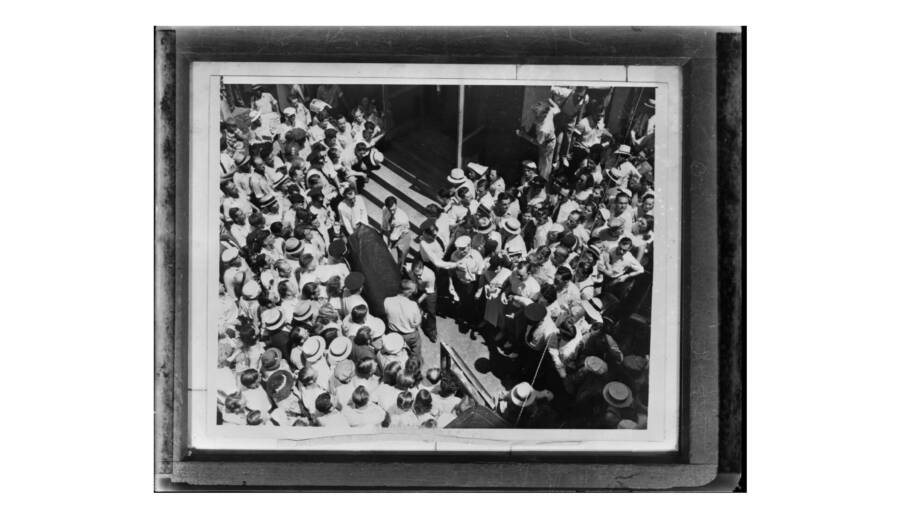
Boston Public LibraryCoroners transporting John Dillinger’s body.
Loved or hated, Dillinger was certainly famous.
Crowds thronged the scene of his death, dipping their handkerchiefs into puddles of his blood, and more than 5,000 people showed up for his funeral, despite efforts to keep the date of his burial a secret.
In the end, Dillinger and his gang had robbed at least a dozen banks, made off with $500,000, and executed a number of risky jail breaks. His crimes — and the federal government’s aggressive response to take him down — also helped legitimize the Department of Investigation, which became the Federal Bureau of Investigation in 1935.
But John Dillinger seemed to always know how things would end for him. “I’m traveling a one-way road, and I’m not fooling myself as to what the end will be,” he once remarked according to PBS. “If I surrender, I know it means the electric chair. If I go on, it’s just a question of how much time I have left.”
After reading about John Dillinger’s death, discover the story of another Public Enemy No.1: Baby Face Nelson. Or, learn the story of Pretty Boy Floyd, another gangster gunned down by the federal agents in 1934.





